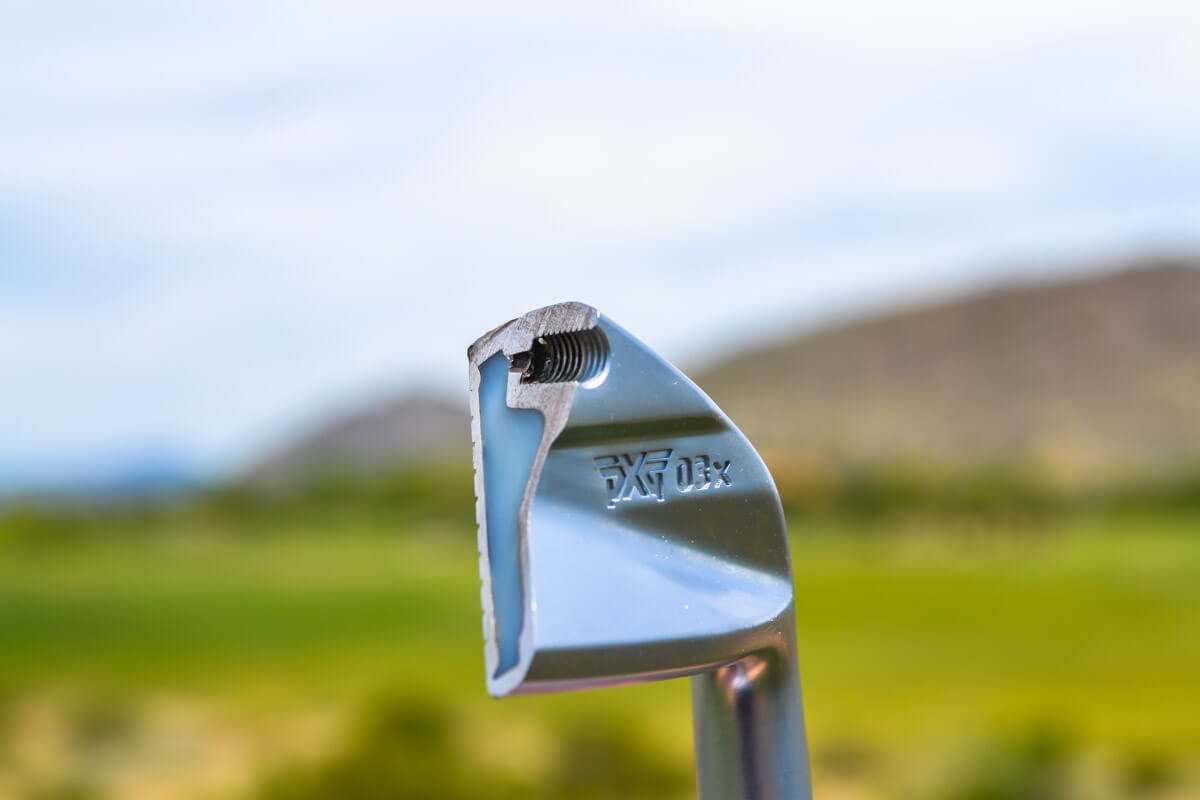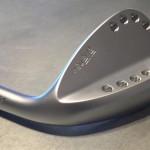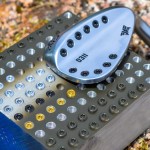Written By: Tony Covey
PXG may not be a household name. If owner, Bob Parsons, has his way however; his PXG brand will soon be among the most desirable in all of golf.
Members of the MyGolfSpy team recently had the opportunity to visit with the PXG (Parsons Xtreme Golf) team at its Scottsdale Arizona headquarters. We’re excited to share the inside story of what’s happening at PXG, where the brand fits in the larger landscape of golf equipment, and most importantly, whether or not PXG’s first effort lives up to its premium billing.
The Man Behind the Brand
Bob Parsons is a golfer.
There are plenty of other adjectives too. Bob Parsons is a billionaire, philanthropist, and sometimes controversial figure, but as much as anything else, Bob Parsons is a golfer.
Inside the circles in which he travels his unrelenting passion for golf is the stuff of legend. He plays almost daily, and I’m told it’s anything but unusual for Parsons to seamlessly transition from the driving range to the golf course to an indoor hitting bay.
An imperfect golfing machine of sorts, Bob Parsons hits more golf balls than some tour pros.
So take that information and push whatever else you might think about Parsons off to the side and believe this; when it comes to the love of the game and the equipment with which it’s played, Bob Parsons is one of us.
Bob Parsons is a rabid gearhead.
He might be the biggest gearhead I’ve ever met. Clubs, shafts, anything related to golf equipment; the man is obsessed. That obsession…the quest for the perfect set of golf clubs… is something I’m sure most of you can relate to. It’s the reason why Parsons’ PXG golf equipment company exists, and why it has the potential to make a substantial impact on the equipment landscape.
PXG: A True Startup
While I like nice things as much as the next guy, I’m personally uncomfortable with opulence, and so given Bob Parsons’ reputation for taking everything he does to the extreme, I expected to be uncomfortable during my visit to PXG.
What I definitely wasn’t expecting was what we found, or perhaps more accurately, what we didn’t find at PXG world headquarters.
While the company will soon relocate to a permanent space, since its inception the entirety of the company’s current operations are run from inside two trailers on the property of Parsons’ Scottsdale National Golf Course. Don’t get me wrong, as trailers go, they’re nice, but a trailer on a fancy golf course is still a trailer.
Parsons, it turns out, is not a frivolous man. The company’s employees sit at non-descript desks in a mostly open space. The team has every resource it needs at its disposal, but none a moment before it’s actually needed. There’s absolutely nothing opulent, or even upscale, about PXG’s base of operations. There is no excess.
Everyone on the PXG team works hard.
PXG, we learned, is not the hobby of a man with more money than sense. As much as PXG is a labor of love for Parsons, it’s also just another one of his business and he runs it as such. Like most every other business Bob Parsons has been a part of, he has every intention of PXG eventually turning a profit and creating opportunities for people in his community to succeed, but for now the company is focused on product not profit.
Sales can wait.
That’s an unconventional approach to the golf industry, but as you’ve probably figured out by now, Bob Parsons is an unconventional guy.
Screw Your Boxes
Nearly every golf company talks about making the best performing clubs in golf.
Parsons Xtreme Golf is different.
Don’t misunderstand me. It’s not that PXG isn’t as intent as the next company on creating the best equipment in golf. It’s that PXG has both the means and the motive to strip away many of the barriers that stifle product innovation. Bob Parsons can do things others in the golf industry can’t.
Golf equipment companies exist inside boxes within increasingly constrictive boxes.
The USGA is a box, but the more time you spend with engineers, the more you realize that it’s hardly the most restrictive.
Company philosophy is a box. Products have to look and perform a certain way. Whether the company line is forgiveness, distance, or the comfort and security of the middle, the status quo and the unrelenting pursuit of business as usual makes it difficult for real innovation to breathe.
Shareholder demands, budget constraints…those are boxes too; arguably the most restrictive of all.
The unspoken reality is that when golf companies talk about creating the best performing products, what they’re actually talking about is creating the best performing products within a particular mindset and at a very specific price.
Contrary to what we’re often told, the next great thing seldom actually starts with performance. It almost always starts with a specific price point. In all but the rarest cases, the cost of innovation can’t exceed the MSRP of $999.
So let me say this again: Parsons Xtreme Golf is different. The PXG team has a blank check.
The company’s R&D department, which began with former Ping engineers Brad Schweigert and Mike Nicolette, was tasked with creating the best performing clubs in golf. Period.
There was no pre-existing mold, no pre-determined philosophy, no target price, and no limitations on cost. The only real directive was to create an iron that looks like a blade, and would equal or exceed the forgiveness of the top game-improvement irons on the market today.
That’s obviously no easy task, and in talking with Schweigert and Nicolette I got the sense that working without constraints was initially a challenge in and of itself. For guys accustomed to working in boxes, it almost certainly takes time to wrap your head around what it means to create without limitations.
The result of their efforts is an initial product lineup unlike anything we’ve ever seen.
The Origins of the Screws
The first thing I should tell you is that the PXG team would prefer that we refer to the screws that adorn every product in its equipment catalog as weights.
While I’m probably not going to do that, the story behind the screws is actually fairly interesting.
During the early prototyping stages, PXG’s Managing Director, Brad Schweigert, was experimenting with different systems for swapping and arraigning weights. Initially he considered pressing tungsten directly into the soleplate of the metalwoods, but the process itself required additional tooling, and was time intensive.
So in the interest of flexibility and expediency, Schweigert came up with a system of interchangeable screws that would allow him to more easily experiment with moving different amounts of mass around the clubhead.
While they served their initial purpose, the screws were never intended to be part of the final design. Schweigert thought the screws looked cool, and the team, including Bob Parsons, felt they gave the clubs the distinctive look they wanted. The screws, which started as a means to accelerate the prototyping phase, soon became the signature of PXG’s inaugural lineup.
The Screws Are Functional
There are basically two things that people outside of PXG have suggested to us about the screw-based weighting system.
- It’s purely ornamental
- It’s overly complex
The first is patently inaccurate. The second is a bit more nuanced.
To be certain, the 16 distinct weights (as found in the driver) are probably 12 to 14 more weights than the average golfer is ready to manipulate on his own, which is why it’s important to point out that like Miura and other high-end offerings, the plan is for PXG’s equipment to be sold primarily as a custom fit offering.
Realistically, even more accomplished fitters (and the tinkering consumer) will focus on basic settings…mass forward, mass rearward, toe-weighted, and heel-weighted. Obviously with all those weights there’s room for fine tuning, but the takeaway should be that the PXG weighting system is only as complex as you want it to be.
A Question of Headweight
Where PXG’s weighting system really shines, according to Brad Schweigert, is its unique ability to tune headweight. With most other adjustable mass systems, weight is moved in large chunks. By moving a large number of smaller weights, PXG’s system not only has the capabilities to spread mass over a larger area and improve inertia, the system’s real strength is that it offers the ability to easily adjust head and swing weight.
With PXG’s system you can easily add or remove weight from the head without the permanence of hot melt or rat glue. Not only are weight changes non-permanent, but the PXG system was designed such that swapping tungsten weights for titanium (or vice versa) results in a change of exactly 1 swing weight point.
That’s hardly complex at all. It’s actually kind of brilliant.
PXG: The Secret Sauce
While the elaborate system of screws will certainly be what golfers notice, the most impressive bits of PXG’s technology are hidden beneath the surface of the 0311 irons.
While one could reasonably describe the 0311 as a wide-bodied blade, hidden in the traditional looking design (screws notwithstanding) is what PXG will tell you is the most advanced iron design ever created.
0311 construction starts with a forged open face body. An ultra-thin face is plasma welded to the body, creating a hollow cavity which is then filled with a thermoplastic elastomer. The elastomer, a flexible goo of sorts, supports the face while enhancing feel. A bonding adhesive keeps gaps from forming between the elastomer and the face.
While that may not sound like much of a radical departure from the types of technology stories told by every other golf company, PXG’s technology is groundbreaking, in part, because it allows for a face that’s half as thick as anything else on the market today. Half as thick. Nobody is even close. From a performance perspective, that’s a tremendous leap forward.
As you might expect, the weight screws provide perimeter weighting for additional forgiveness while allowing for precise swing weighting.
To throw around standard industry terms, the totality of the design translates to more distance, more forgiveness, and because of the elastomer, better feel too.
The 0311 plays like a game-improvement iron but looks similar to a blade. The footprint is comparable to TaylorMade’s RSi2, but with cleaner lines and a more traditional, perhaps even timeless look (again, screws not withstanding).
PXG owns several patents that cover the design and manufacturing processes. The company’s hope is that it will be 20 years before anyone else can do anything similar.
PXG: It Costs More to Make
PXG’s material costs are high. The manufacturing process is complex, and the company believes it has the tightest tolerances in the golf industry. All of that raises production costs, and we haven’t begun to account for the added expense that comes from all those screws.
A stock shaft lineup that includes Fujikura’s Pro series and Aldila’s Rogue in the woods, and KBS and Nippon in the irons doesn’t do much to lower costs either.
You may not like the price (I don’t like it), but with PXG you are paying for actual technology. Callaway, TaylorMade, Titleist…take your pick; they’re not going to invest the kind of money it takes to develop an iron like the 0311 because their typical consumer won’t accept a $2400 price tag for a set of eight irons.
PXG: Price List
PXG: A Performance Brand
So given the expense, you might be inclined to view PXG as a lifestyle or image brand. That’s not how it sees itself. PXG won’t be telling any tales of magic, fairy-dusted steel or offering platinum inlays in its diamond-encrusted irons. PXG is first and foremost a performance brand. It lists its primary competitors as TaylorMade, Callaway, and Titleist, not Miura, Epon, or Honma.
That said, Bob Parsons has every intent of building a performance brand with a luxury image. That last piece only happens when you sell for above average prices. The product must be desirable. It has to retain its value too, so don’t expect to see PXG churning out new product like TaylorMade and Callaway, and definitely don’t expect prices to be slashed six months after release.
Unfortunately the pricing structure probably puts the 0311 iron out of reach for the average consumer, and that’s a shame because I believe the 0311 is the most significant iron to come along in years. It’s the total package.
The 0317 hybrid is almost equally as impressive. Mike Nicolette, who is responsible for many popular PING designs going back to Karsten’s time, told me it’s the best thing he’s ever created.
Like most hybrids it won’t get top billing, but it’s among the best, if not the best I’ve seen within the category.
The 0811 Driver and 0341 Fairway woods are at least competitive with anything else, and while I would agree with those who say the weight system is complex, I’d also argue its virtues. Both are very good (Schweigert, who supervised the team responsible for the #1 Selling PING G30 calls it his best work ever), but so are lots of other drivers and fairway woods for literally half the price.
To an extent, the jury is still out on this one, although there may prove to be a compelling accuracy story here that doesn’t come at the expense of distance.
The 0311 wedges are a safe, middle-of-the-road offering, with the potential to be a lot more interesting if the lineup expands to include additional bounce and grind options. For now, they look and feel great, they’re extremely forgiving, and as you would expect, blend seamlessly with the 0311 irons.
The putters offer a distinctively PXG look and come in a variety of shapes. They’ll look good in a bag full of PXG equipment, but this is unquestionably the spot in the bag where I have the most trouble trying to justify the price. Then again, if Cameron and Bettinardi can get $350+, what’s another $50?
As the technology evolves and manufacturing costs drop, the door is open for retail prices to fall too, but don’t expect PXG to ever enter the true mainstream. The products cost literally twice as much as mainstream alternatives, and while some of that is driven by the true costs of manufacturing, I also believe it’s exactly where Bob Parsons wants to position his PXG brand.
PXG: The Future
With the first round of product development complete and an actual product line on the market, PXG can start looking towards the next phase.
The PXG lineup is already available at Cool Clubs locations nationwide, and you can expect its dealer network to grow rapidly.
There’s a bit of a hiring frenzy taking place as the company has grown from just a handful to 20 employees in a very short period of time. Parsons is bringing in top talent from both inside and outside of the golf industry to help grow and streamline the operation.
Marketing and PR are beginning to ramp up, and while I haven’t been told anything specifically, I suspect there’s going to be a concerted effort to make sure golfers know the PXG name. The initial ads we saw…the ones that won’t make it to print… paint a picture of a brand intent on making some noise.
PXG isn’t going to sit quietly and wait to be discovered, it’s going to promote itself in ways that other high-end golf equipment brands don’t. While PXG doesn’t harbor any short-term delusions of outselling the biggest names in golf, I believe it wants to occupy a similar position within the minds of golfers.
PXG. Hear it enough times and you’ll remember it.
The plan is to grow the size of the PGA Tour Staff to 4-6 members, including names inside the Top 50. This too is an unconventional approach for a high-end brand, but PXG believes…actually PXG knows that tour validation is an important piece of the retail equation. Even those who can afford to spend more on their golf clubs want proof that their clubs are suitable for play at the highest level.
While the consumer perception may be luxury, PXG’s reality is performance.
It’s a safe bet additional products will be added to the lineup in the coming months.
As for sales projections…I asked Bob Parsons how many sets of irons he expected to sell the first year.
“Twelve-hundred”, he said.
“Twelve-hundred?” I asked (probably looking a bit puzzled).
Parsons shook his head, laughed and said “Not twelve-hundred, twelve-thousand. I’m not good with small numbers”.
That, as much as anything else, should tell you everything you need to know about how Parsons plans to operate PXG.
You don’t spend what PXG has spent or bring in the kind of talent PXG has hired if success will measured in small numbers. No part of the PXG plan involves becoming just another boutique golf brand. Bob Parsons is a big numbers kind of guy.
While success for PXG might seem an unlikely proposition given what most of us are accustomed to paying for golf equipment, Parsons is resolute in his belief that he can grow a golf brand. He believes golf clubs, even premium ones, are a relatively easy sell, and clearly he believes the timing is right for a new company with a different approach to enter the golf equipment marketplace.
Bob Parsons is a disruptive force and he’s brought his brand of disruptive energy – his employees would say contagious energy – to the golf industry, and you better believe he plans on making an impact far beyond an initial twelve-thousand sets.
For more information on the PXG product line, visit PXG.com































































































Loparch
8 years ago
I bought the 10 iron set. 4 iron through 58 degree wedge composite shafts.
Two eagles in 10 days with clubs. Shot two – 1 over par rounds and a 2 over par round in the first two weeks of ownership of clubs.
I am a 10.1 index and a bad putter.
Love the clubs. The wedges are unbelievable!